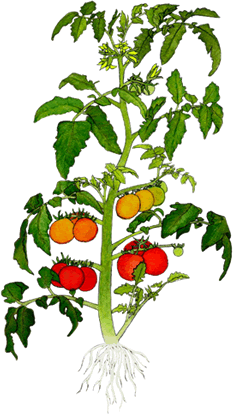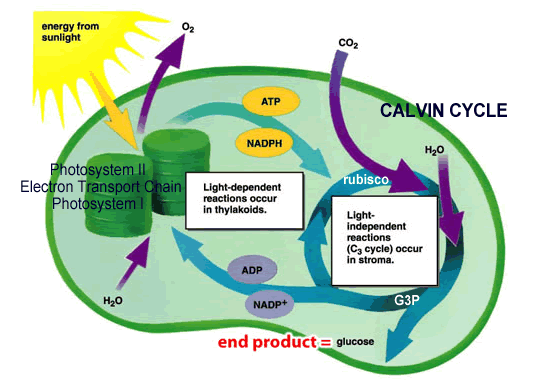Photosynthesis - Light Dependent and Light Independent Reactions
 Photosynthesis is the process by which green plants, algae, and some bacteria convert light energy into chemical energy stored in glucose or other organic molecules. This process occurs in the chloroplasts of plant cells and involves several stages:
Photosynthesis is the process by which green plants, algae, and some bacteria convert light energy into chemical energy stored in glucose or other organic molecules. This process occurs in the chloroplasts of plant cells and involves several stages:
-
Absorption of Light: Chlorophyll, the pigment found in chloroplasts, absorbs light energy, primarily from the red and blue parts of the light spectrum. This light energy is essential for the photosynthesis process to start.
-
Conversion of Light Energy to Chemical Energy: The absorbed light energy is used to power a series of chemical reactions. These reactions occur in two main stages:
a) Light-Dependent Reactions: These reactions take place in the thylakoid membranes of the chloroplasts. Light energy is used to split water molecules into oxygen, protons (H⁺ ions), and electrons.
The electrons move through a series of proteins and molecules (electron transport chain), generating ATP (adenosine triphosphate) and NADPH (nicotinamide adenine dinucleotide phosphate), which are energy carriers.
b) Light-Independent Reactions (Calvin Cycle): Also known as the dark reactions or the Calvin Cycle, this phase occurs in the stroma of the chloroplasts.
ATP and NADPH produced in the light-dependent reactions are used to convert carbon dioxide (CO₂) from the atmosphere into organic compounds, such as glucose. This process involves a series of enzyme-controlled reactions that ultimately result in the production of carbohydrates.
-
Release of Oxygen: During the light-dependent reactions, oxygen molecules (O₂) are produced as byproducts when water molecules are split. This oxygen is released into the atmosphere, contributing to the oxygen we breathe.
Photosynthetic Reaction

You will take a closer look at Photosystem I and Photosystem II in the Photosystem Coloring Worksheet
You can also observe photosynthesis in the lab!
- Inquiry Lab with Vernier Probes - measure changes in oxygen in plants and animals
- Separation of Plant Pigments with Chromatography
- Measure the rate of photosynthesis with leaf disks

